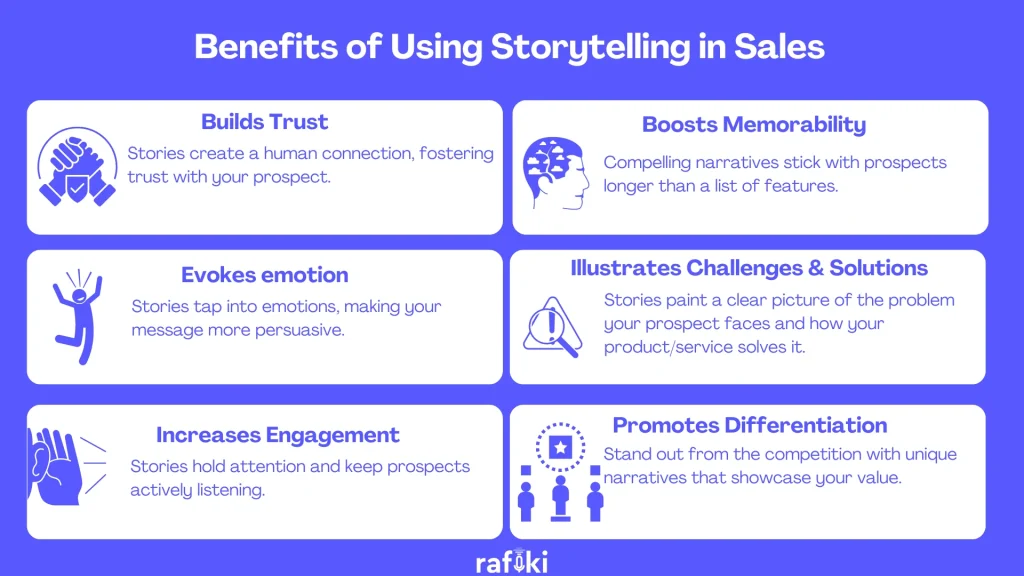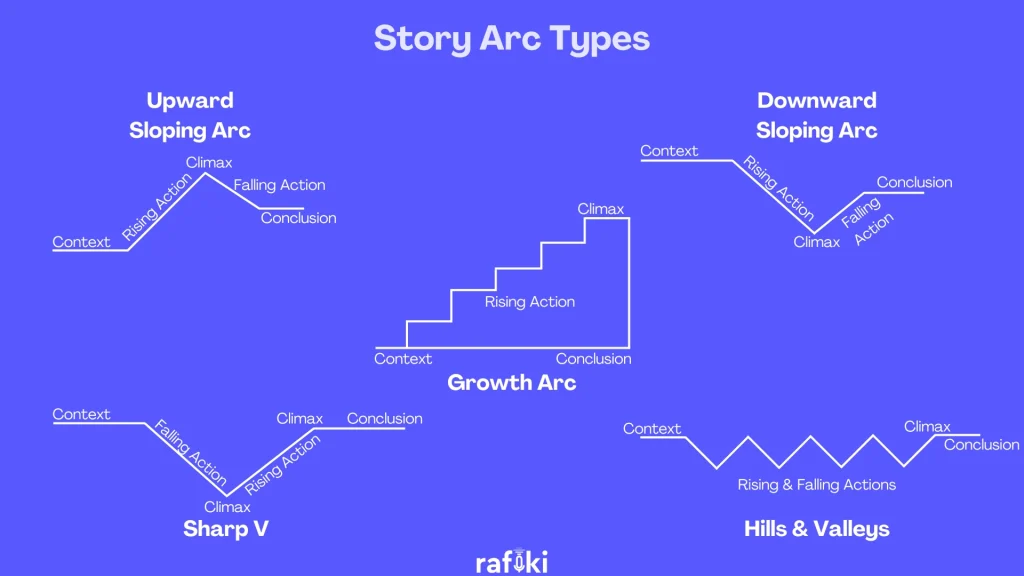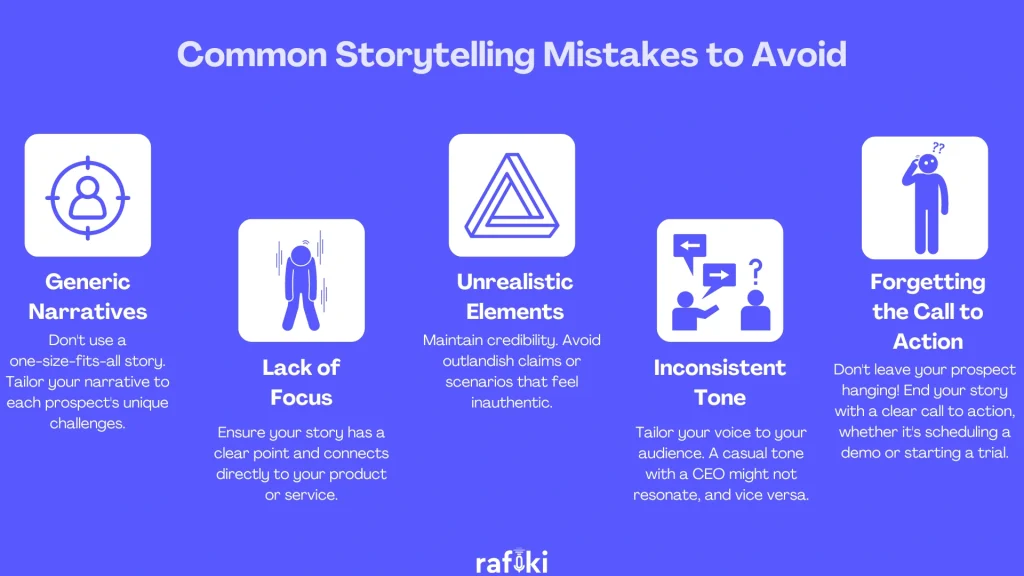Why Rafiki
Pricing


Pricing
Solutions

RevOps Leaders
Synchronize revenue generating functions

SDR Leaders
Get your team aligned and Coach your Reps 3x faster at scale

Sales Leaders
Unlock pipeline truth, drive confident forecasts

Remember that childhood game where you whispered a secret into a friend's ear, and it morphed into a hilarious (or sometimes scary) story by the time it reached the other end of the circle? Sales conversations can feel a bit like that game. Information gets passed back and forth, but how often does it truly resonate with the listener? This is where the art of sales storytelling comes in.
It's about crafting narratives that captivate prospects, not just convey features. By weaving a compelling story, you can turn a monotonous sales pitch into a memorable conversation that drives results.
Let's dive into the power of storytelling in sales, and explore how you can leverage it to close more deals.
Sales storytelling isn't about crafting elaborate fairy tales. In a sales context, it's the art of weaving narratives that resonate with your prospects. Think of it as a bridge between the features of your product and the challenges your ideal customer faces.
At its core, a captivating story has relatable characters, a central conflict, and a satisfying resolution. In sales, the characters are your prospect and your solution. The conflict? The challenges they're facing. And the resolution? The positive outcome achieved through your product or service.
For example, instead of dryly listing your accounting software's features, tell the story of a small business owner frustrated with manual data entry errors. This narrative introduces the character (the prospect) and the conflict (their pain point). Now, weave in how your software streamlined their process, saving them time and money (the resolution). Suddenly, features become solutions to real-world problems.
Here's another example: Ditch the generic "boost your sales!" claim. Tell the story of a salesperson struggling to close deals. Explain how your sales training program equipped them with the skills to identify customer needs and craft compelling proposals (the resolution). See the difference? Storytelling in sales breathes life into your message, making it relatable and impactful.
Let’s take a look at all the benefits of using storytelling in sales:

Before crafting your story, you need a clear understanding of the hero – your prospect! Invest time in researching and defining your Ideal Customer Profile (ICP). This includes their demographics, industry challenges, buying behaviors, and goals.
Here's where storytelling magic happens! Narratives are all about building momentum and how you land the ending. Here are some tips on how to do that:
But if you want a more detailed approach, here are a few different ways your story arc can be developed:

If you create your story around these arcs, then you stand a good chance at being engaging and persuasive. Here’s what the terms in the image mean:
Every story must start with setting the context. This is all about introducing the environment of the story, namely, the problem that the prospect might be facing. The purpose of setting the context is so that the rest of the story is relatable to the prospect. It also helps align the prospect’s perspectives with that of yours.
This step is where all the action is. All the important points such as the impact of the problem, all the data analytics & insights build up this part of the story.
This is the answer. To all the questions you brought that built momentum during the rising action step. This is where your offering comes in and takes the spotlight as the savior of prospect.
It’d be far too easy (read: not convincing) a story if the climax led straight to the conclusion. There has to be some friction, some constraints that make the story believable to your prospect. Talk about some realities of the prospect that they need to understand, but make sure you don’t go overboard!
The grand finale! This is where you bring the story to a satisfying end. The positive outcome that your product/service brings. But you have to make sure that even with the falling action, your offering is still a very attractive proposition to the prospect. Tie up all the loose ends, but make sure that you do it in an engaging way. When all is said and done, your offering must stand the clear winner - the perfect solution to your prospect’s problem.
Don't just tell, show! Use vivid language and sensory details to bring your story to life. Instead of saying "improved efficiency," describe how your software saves them hours a week, allowing them to focus on strategic tasks.
Data is the backbone of any strong sales pitch. But facts and figures can feel dry on their own. That's where sales storytelling comes in – it allows you to weave data into a compelling narrative that resonates with your audience. Here's how:
Rafiki, the conversation intelligence platform, can be a goldmine for crafting impactful sales stories. Here's how:
Now that you know why and how to use storytelling in sales, here’s a quick reminder of common mistakes to avoid:

Sales storytelling isn't a magic trick, but it's a powerful tool to transform your sales conversations. By crafting compelling narratives that resonate with your prospects, you can build trust, boost memorability, and ultimately close more deals. Keep in mind, stories have the power to connect with us on a deeper level, making information sticky and emotions strong. People don’t like sales pitches in general, so stories are a highly effective way around that.
Ready to take your sales storytelling to the next level? Rafiki can be your secret weapon!
With its advanced conversation intelligence features, Rafiki can help you uncover valuable customer insights to craft data-driven narratives that resonate. Explore how Rafiki can empower your sales storytelling – sign up for your free 14-day trial today!
Get Insights to Take Your Sales Storytelling to the Next Level